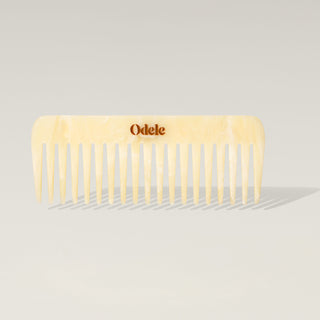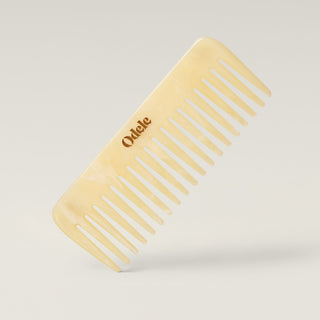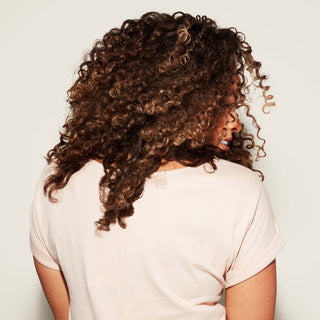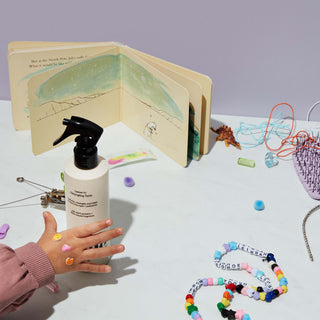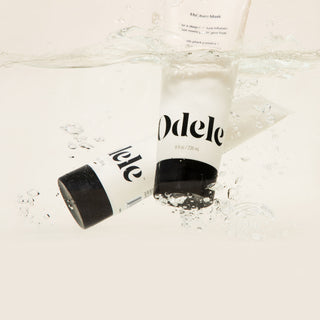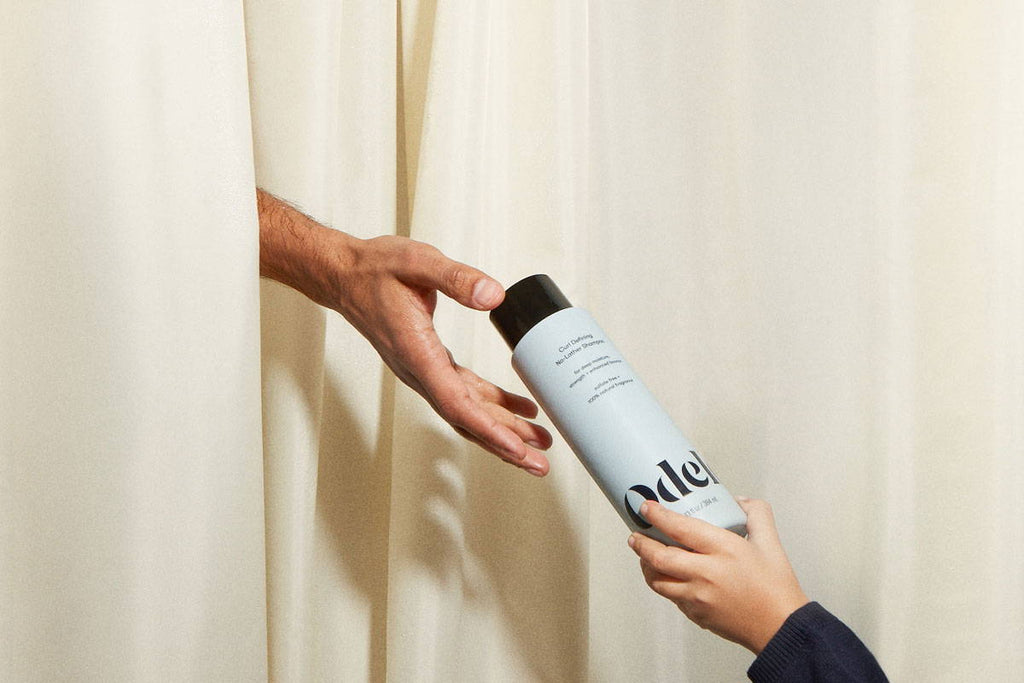Like all hair types, curls and coils come with a unique set of challenges—and it’s safe to say detangling is somewhere at the top of that list. Regularly detangling your hair is one of the best things you can do to keep it healthy and strong, yet it’s often the most dreaded step of any curly hair routine (raise your hand if you’ve broken more than one comb combating tough tangles?! 🙋🏽♀️).
If you’re hacking the knots out of your hair, please stop. Finger detangling can drastically reduce damage to your coils, making it a great alternative to traditional tools (particularly for dry or damaged hair). Whether you’re a newly transitioned natural or just looking to lessen breakage, there are some big benefits to handedly unwinding what’s wound-up…

The benefits of finger detangling
Why would you use your hands when combs exist? Well, for one, curly and coily hair types (3s + 4s in the hair texture typing system) are especially delicate and need to be handled with care. Tearing through knots and tangles causes breakage and split ends (which leads to, yep, more tangling).
On top of that, curls and coils tend to attract more (and more complicated) tangles. A lot of this has to do with shedding. Whereas loose strands of straight hair slide easily off the scalp, curly and coily hairs often wrap around each other or get caught among other hairs—creating knots when your hair rubs against your pillowcase or catches in your hair tie.
Finger combing is a simple way to protect those precious locks. Compared to brushing and combing, it’s a far gentler method for working through knots, without the tugging and tearing that damages strands.
To be clear: Brushes and combs are not inherently bad for tighter textures—and we’re forever grateful for the ones that are specifically designed to glide smoothly through tightly coiled hair (like our wonderfully gentle wide-tooth Comb). But if your hair is extra fragile, your hands may just be your best (and safest) hair tool.
Other benefits of finger detangling include:
More control.
Finger combing gives you full control over the accuracy and intensity of your detangling efforts. You get to feel your way through tricky situations and carefully work them apart. You’re also able to concentrate force only where it’s needed, allowing you to ease up pressure when you sense your hair might break.
Length retention.
If you’re trying to add a few inches, this method may help you out. Aggressive brushing and combing can yank healthy hair from the scalp and split knotty hairs. While finger detangling won’t make your hair grow any faster, it will minimize breakage and keep more hair on your head, possibly helping you to retain length over time.
Better knowledge of your hair.
Working your way through your mane coil by coil helps you get in tune with the textures, patterns and behaviors of your hair. You’ll quickly learn that knots tend to congregate at the back of your head, or that your hair actually consists of multiple curl patterns (#relatable), and ultimately discover how to best care for your curls.

How to finger detangle your hair
While it may take some trial-and-error to figure out the finger detangling routine that works best with your hair, you can follow these tips to get the best results:
Start in the shower.
Always detangle on wet or damp hair. Hair becomes more elastic when it’s wet, which lowers the chance of breakage. The water flow of the shower can also help loosen and separate curls for easier combing.
For the smoothest detangling, slather your hair from roots to ends with a conditioner that has plenty of slip (or, saturate your hair with a hydrating leave-in conditioner). It’ll help your hands glide right through the most matted areas.
Sections are your friend.
Separating your hair into smaller sections will help you maneuver more effectively. Concentrate on one area at a time to thoroughly work through snags in each section before moving to the next.
Work from ends to root.
The ends are the most fragile part of your hair, so it’s best to begin at the bottom, then slowly and carefully make your way up to the roots.
Keep scissors handy.
Those tiny, stubborn knots you just can’t seem to unravel? Cut ‘em loose. Whatever you do, resist the urge to rip through or snap them off—even doing so gently will weaken the surrounding hair and invite split ends to visit.
Take. Your. Time.
When done right, this method takes a little (OK, a lot) longer than traditional combing. The denser your hair and more complex your curl patterns, the more time-consuming it will be.
A word of advice? Forgo your fingers for a faster tool when you’re on a time crunch—rushing through the process won’t reap the same benefits as taking the time to do it properly.
Some people opt to finger detangle exclusively. While that’s great, let’s be real: we don’t all have that kind of time or patience on a regular basis! If you’re short on time, patience or both, use your hands to “pre-detangle” by gently separating matted sections in the shower before following up with your trusted tools.


